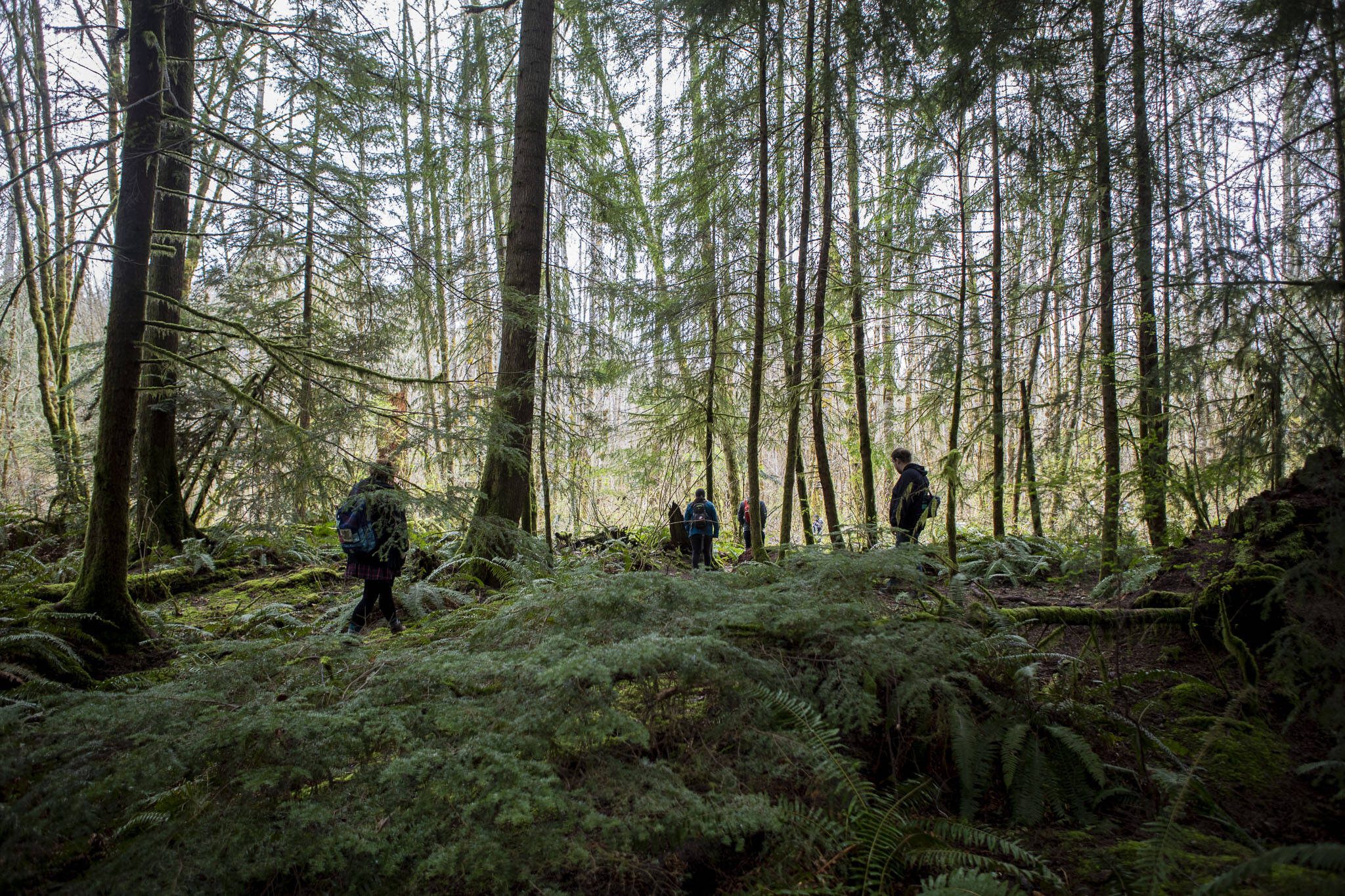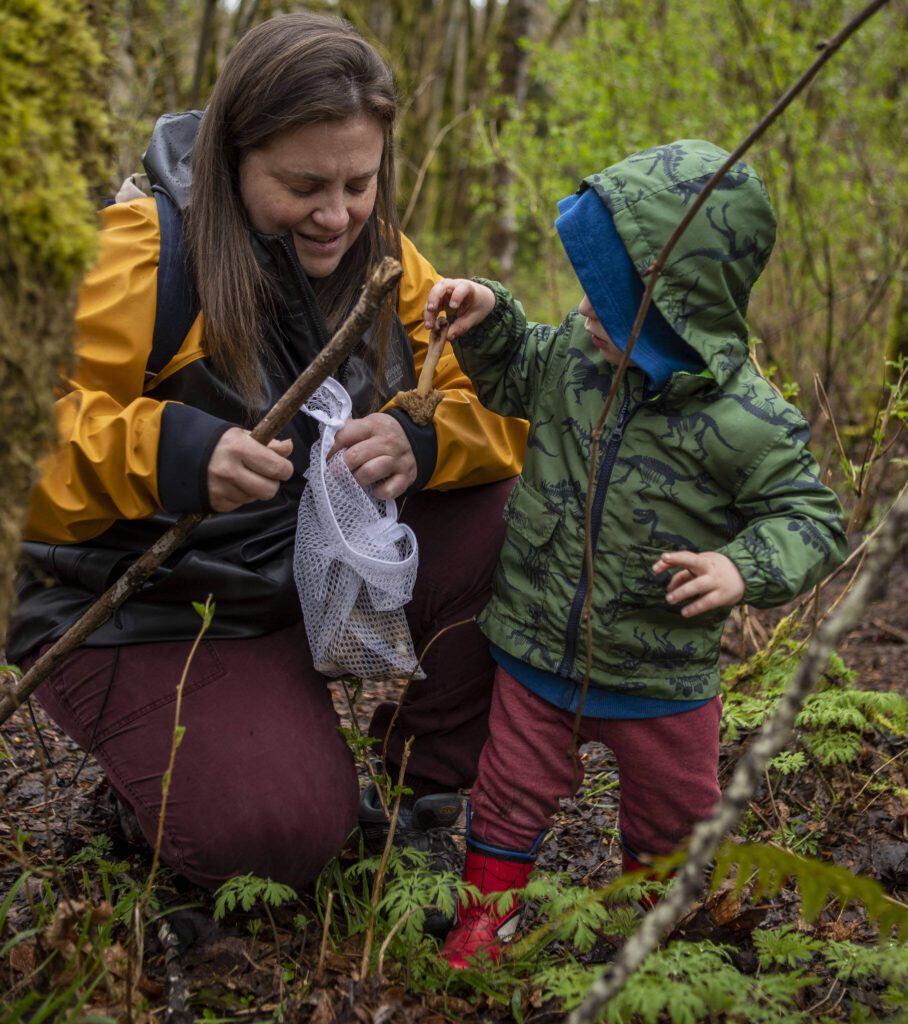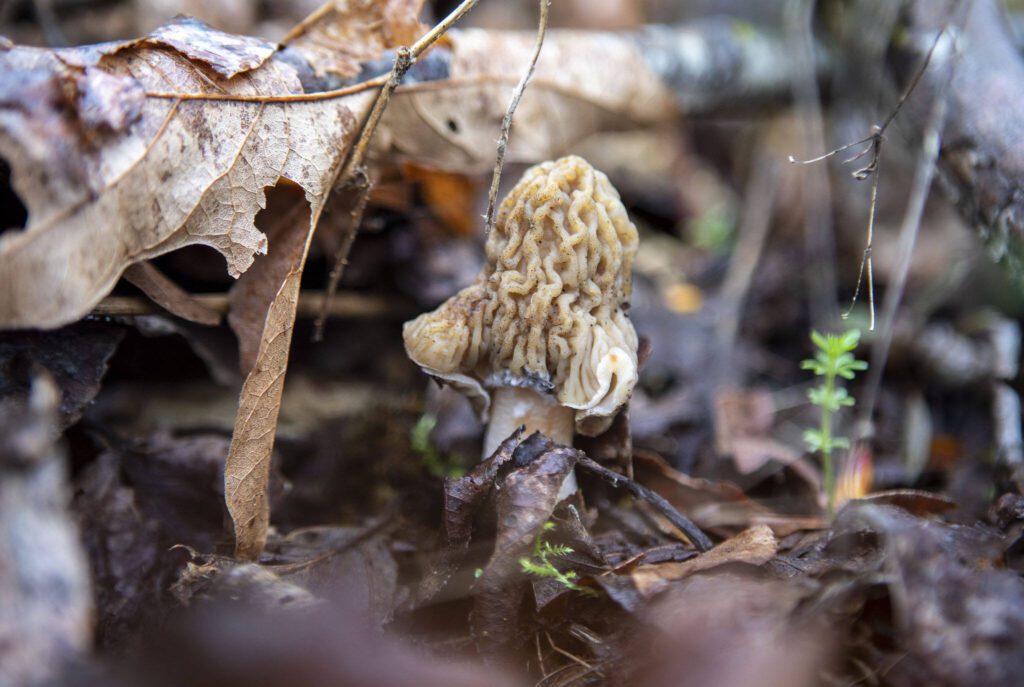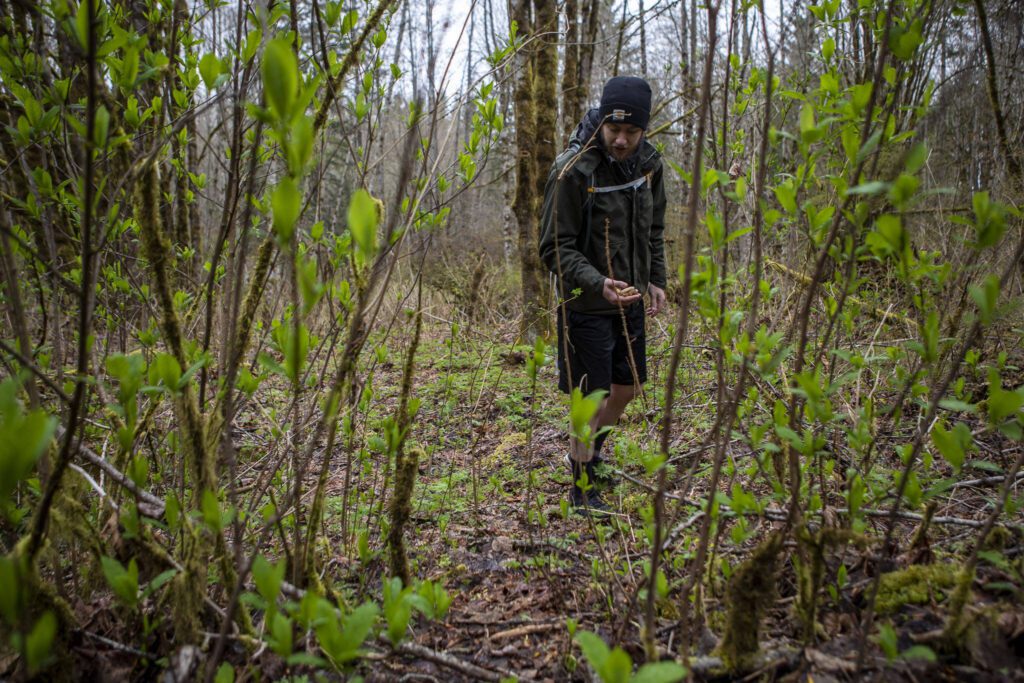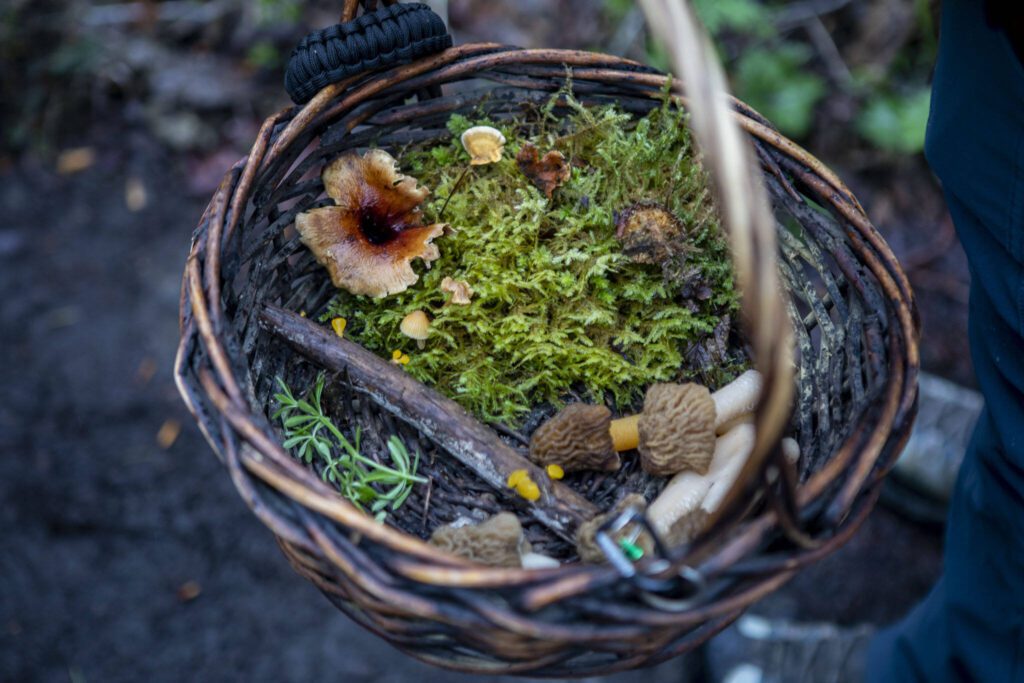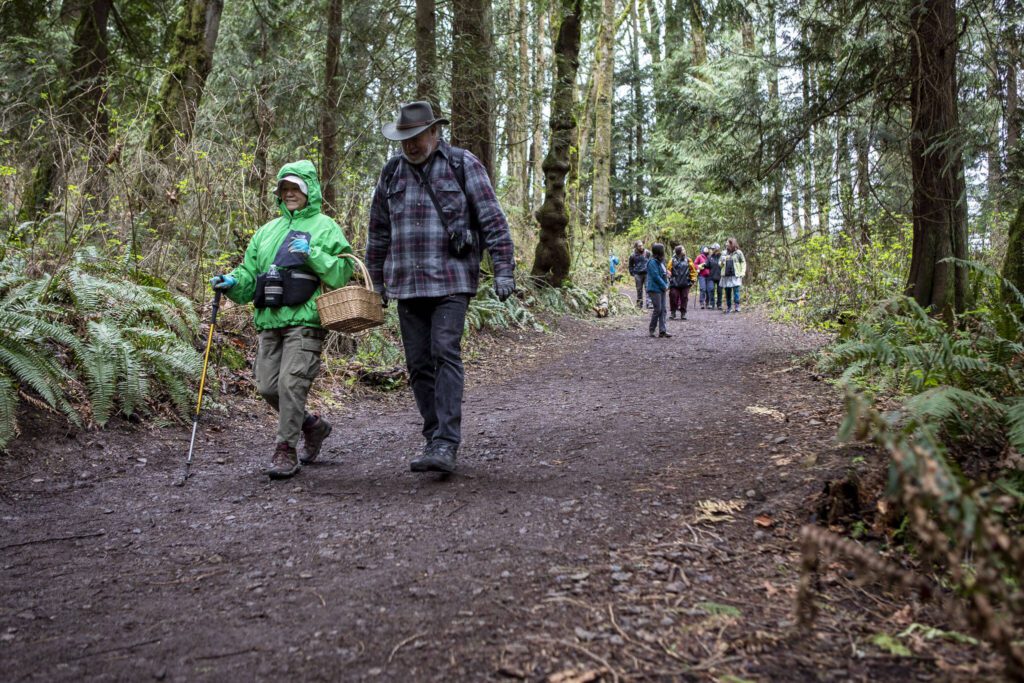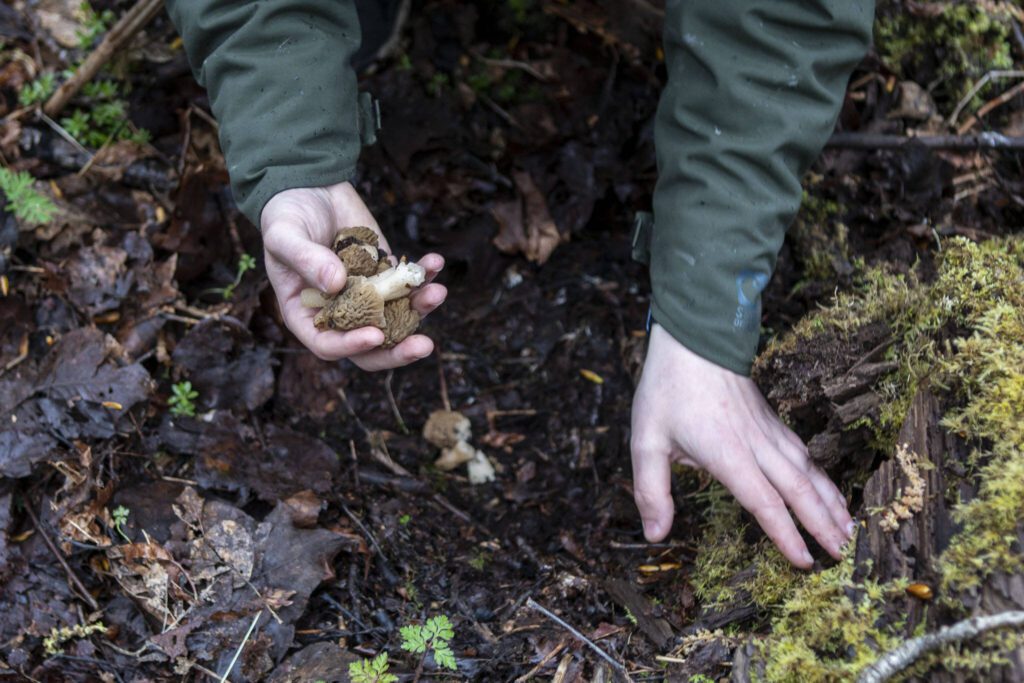SNOHOMISH — Wicker baskets in hand, members of the Snohomish County Mycological Society stood in a semicircle, listening to Esther Marks give a few pointers prior to a mushroom foraging expedition at Lord Hill Regional Park on a rainy Saturday.
They were after Verpa mushrooms, a fungi similar in look to the morel family, which those in the group were also hoping to find. It was the first weekend in April, early in the spring mushroom season, and everyone was excited despite the cold drizzle.
Off the top, Marks addressed the newcomers.
“Don’t eat anything while we’re out there,” said Marks, one of the leaders of the group. “Let’s start with that ground rule.”
That’s the first thing to know — mushrooms can be picked up without fear, but don’t eat them until the fungi has been identified beyond a shadow of a doubt. There were a lot of newbies in the group, many of whom were about to experience their first foray.
“I seem to find all the people that go on the mushroom hunts and come to the clubs are just always good, solid people that I want to be around,” society president Melanie Swails said. “The club is about mycology, education and just teaching people what mushrooms are, what they look like, how to forage them and what they do for our planet.”
It was a mixed and friendly group of people who soon scattered into the woods. It took about 20 minutes, but it soon became clear the woods were full of Verpas. Or at least it was clear to those who knew what they were looking for.
In the overcast light, it can be especially difficult to spot mushrooms hidden among the forest floor and in their favorite swampy areas. Often they’re covered with leaves and the only thing setting them apart from foliage is the fungi’s texture.
But they’re out there. Washington, due to its ecosystems, is a rich state for mushroom enthusiasts.
“If you look down at your feet more and actually look for mushrooms, you’ll just start to see there’s a lot more in our everyday life,” said Andrew Fisher, a member of the group. “That’s part of what got me excited, it’s really cool.”
Education about fungi, and more broadly nature, has been a fundamental part of the organization’s mission since it was founded in 1971. Forays into the woods are held weekly during mushroom-heavy months in the spring and fall. The group also meets as a whole once a month and brings in outside experts to give educational presentations.
Often, Marks said, education helps people who might be scared initially of mushrooms.
Mushrooms “are not odd aliens,” Marks said. “They’re actually friends.”
They have a variety of uses.
The Verpas the group picked will mostly be consumed as food. Several swore sautéing the mushrooms, then eating them with eggs, is the way to go.
Marion Richards, a natural dyer and member of the group, teaches several classes, including one using mushrooms and lichens to create dye.
“One thing that people aren’t familiar with is that mushrooms will give you every color under the sun,” Richards said. “It’s only a few select mushrooms that will do that. But you can get every color that you can get essentially with other other things, like plants, that you can use for dyeing. So there’s quite a colorful variety.”
By the end of the morning forage, there were piles of mushrooms on a folding table. Several spots proved particularly fruitful and almost everyone on the forage found at least a couple mushrooms.
Cooking tips and recipes were already being thrown around.
“There’s not very many clubs where you can walk in and be accepted day one,” Marks said. “This is like, ‘Let’s go see what we can find today,’ and we’re all super happy because we were here and we got some fresh air and we found some things and that was exciting.”
Jordan Hansen: 425-339-3046; jordan.hansen@soundpublishing.com; Twitter: @jordyhansen
Talk to us
> Give us your news tips.
> Send us a letter to the editor.
> More Herald contact information.
